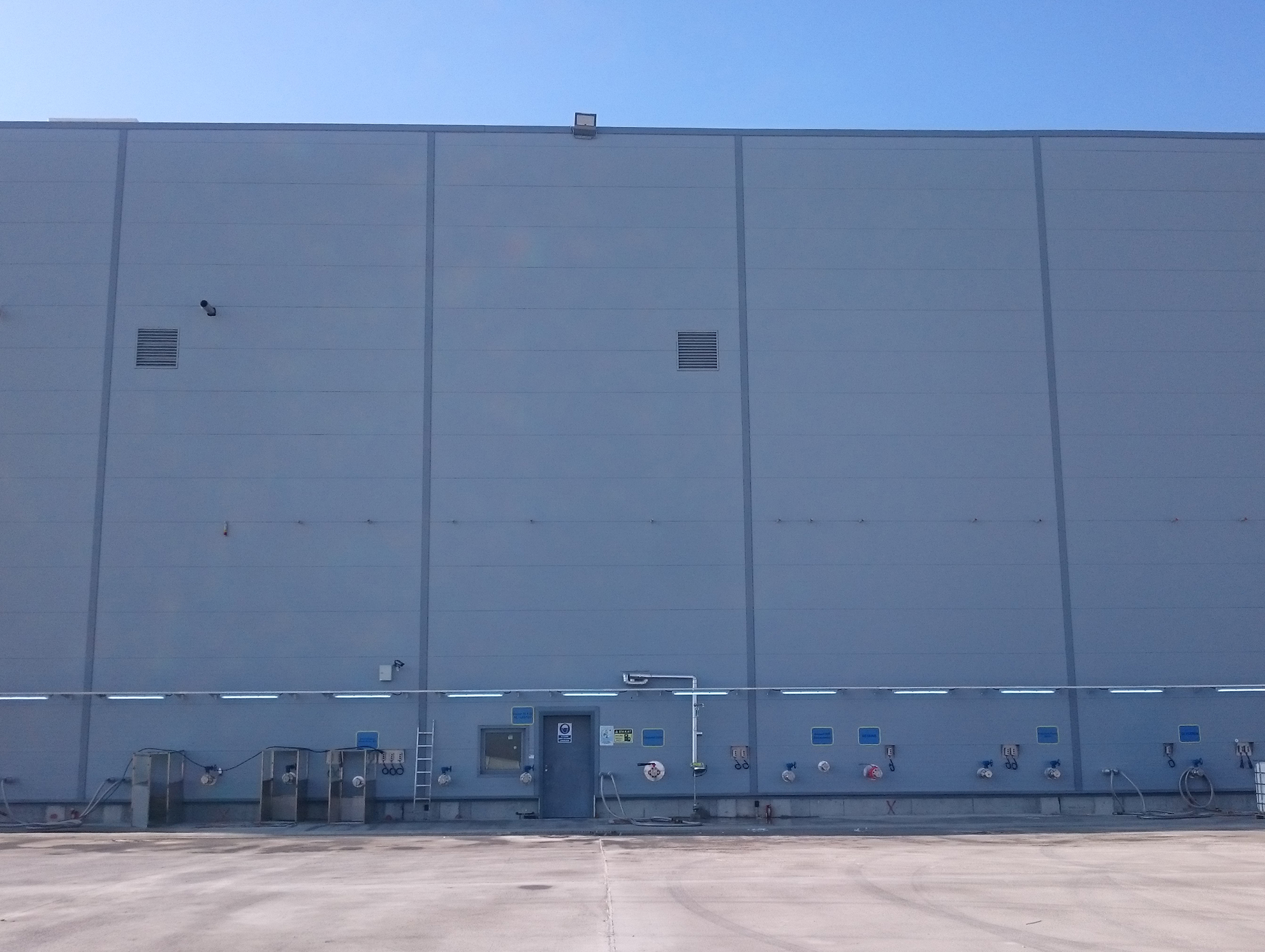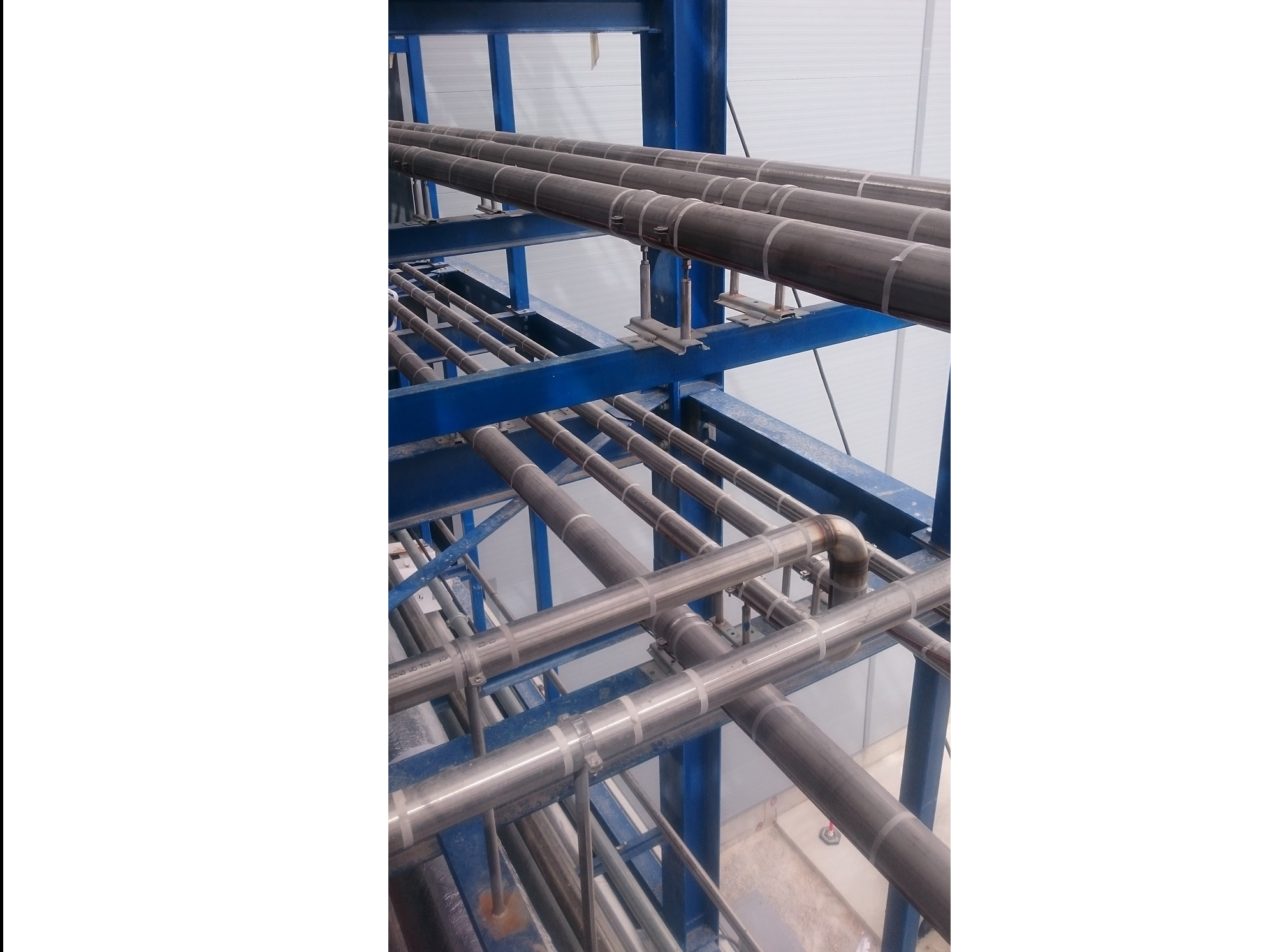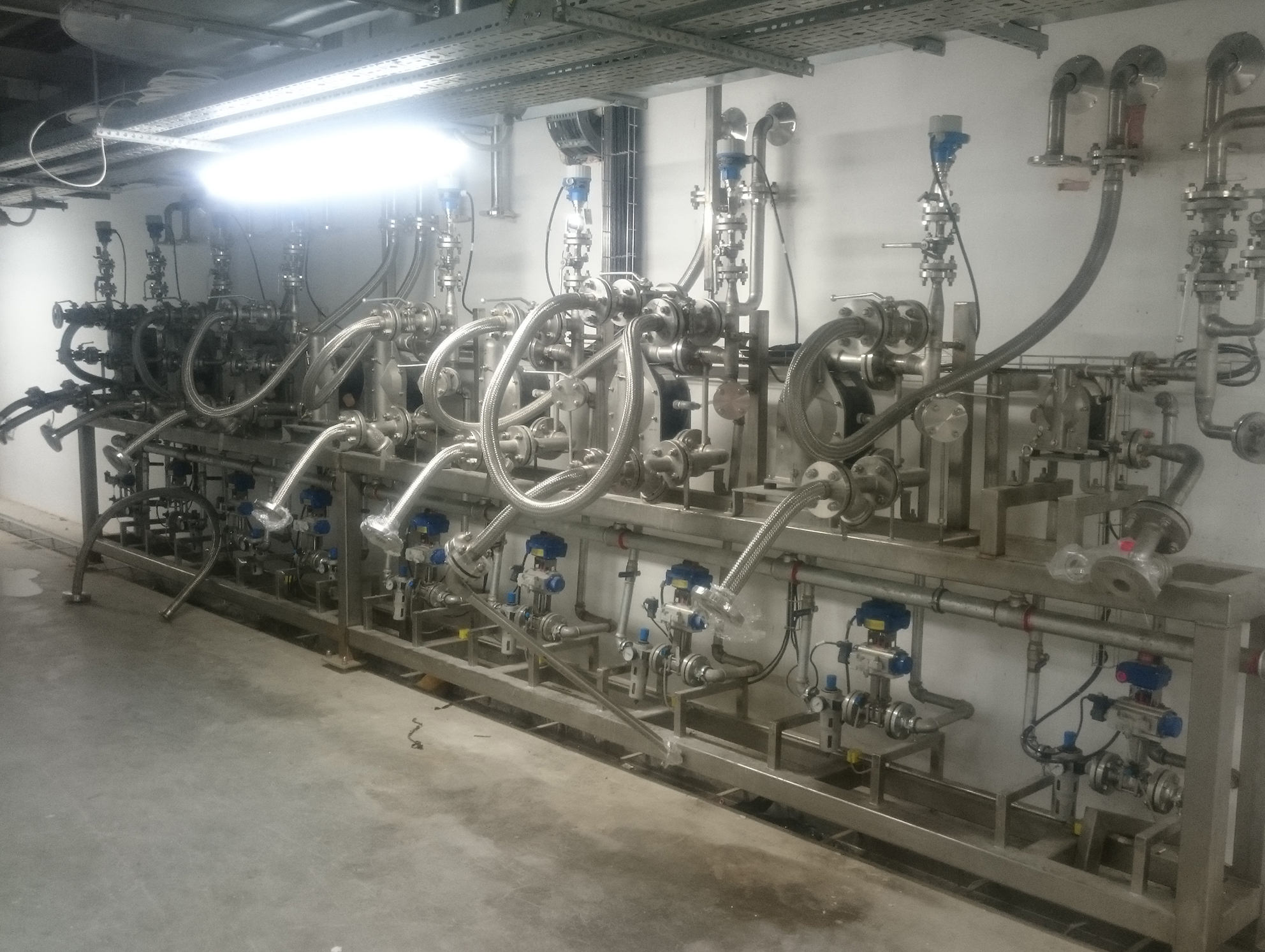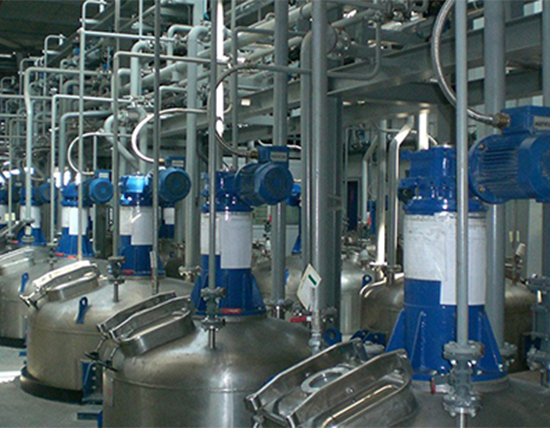Field Application Services
FIELD APPLICATION AND INSTALLATION PROCEDURES
With our expert, experienced field installation team, all kinds of machinery and equipment installation and piping works are brought to fruition fast and error-free in accordance with the project.
- -Equipment Installations (pumps, tanks, etc.)
- Piping Works
- DI (Deionized) Water Systems
- Purified Water Systems
- WFI (Water for Injection) Systems
- Pure Steam Systems
- Valve Matrix Systems (Valve Farm)
- Pigging Systems
- Jacketed Pipe Systems
- Tank Manufacturing and Installations (Milk tanks, WFI water tanks, Jacketed tanks, Mixture preparation tanks, etc.)
TURNKEY PLANT INSTALLATION
According to the processes required, engineering and project solutions are created, domestic and import equipment are procured from workshops of tanks, skid units, etc., and then field assemblies are made. Piping (spooled or in-situ manufacturing) and automation system are installed between these equipments before the installation of the plant is completed
- Dairy Plant
- Juice Plant
- Refined Oil Plant
- Home and Personal Care Products Plant
- Paint Plant
- Serum Production Plant
- Pharmaceutical Production Plant
- Any kind of process plant
SPOOL PRODUCTION AND SKID MANUFACTURING AT WORKSHOP
Spool production and skid manufacturing are done in the workshop using isometric drawings/PI diagrams. Even if the application field is not ready for installation, the installations can be completed after the field is ready. This saves time and speeds up the commissioning process.
WPS/PQR (Welding Procedure Specification / Procedure Qualification Record)
Welding procedures include a set of tests and controls that are used to confirm the accuracy of welding methods, to test mechanical values that cannot be tested in practice, and to report all results. If the test results are correct, the welding procedures (WPS) are generated based on the values used when preparing the PQR (WPAR). With these documents approved by third party organizations, quality continuity is ensured in all installations.
WELDLOG
Weldlog documents contain various sections of information, such as the isometry number of the welding on a particular isometric drawing, welding number, date, welding procedure, and welder information. In this way, the traceability of each weld is ensured.
ORBITAL WELDING
The so-called “orbital welding method” has been developed for use in pipe welding. It is an automatic system that enables the welding machine to use circular movement on the clamp mounted on the outside of the pipe, while maintaining two separate pipes, or pipe-fitting on the same axis. Arc movement is controlled by the latest developed automatic control technology in these machines. Speed and reliability increase while welder intervention is reduced to a minimum.
ENDOSCOPY – X-RAY
The endoscopic examination method (visual inspection) is performed with the equipment such as video boroscopes fiberscope, and with a camera through the pipes. Control of welding quality and problems, if any, such as surface cracks, corrosion, etc. can be detected.
If requested, the quality of welding can be checked by a radiographic inspection method. With this method, all internal and external faults (cracks, bubbles, penetration, etc.) are determined to ensure optimum quality.
PASSIVATION
This process involves forming a protective film layer on the surface by passively processing the already processed, cut, bended and welded chrome parts against rust. In order to prevent the chrome material from truly rusting, it is necessary to prevent contact with carbon materials, and to wash away the carbon residues, which are contaminated once coming into contact with acidic substances.











































